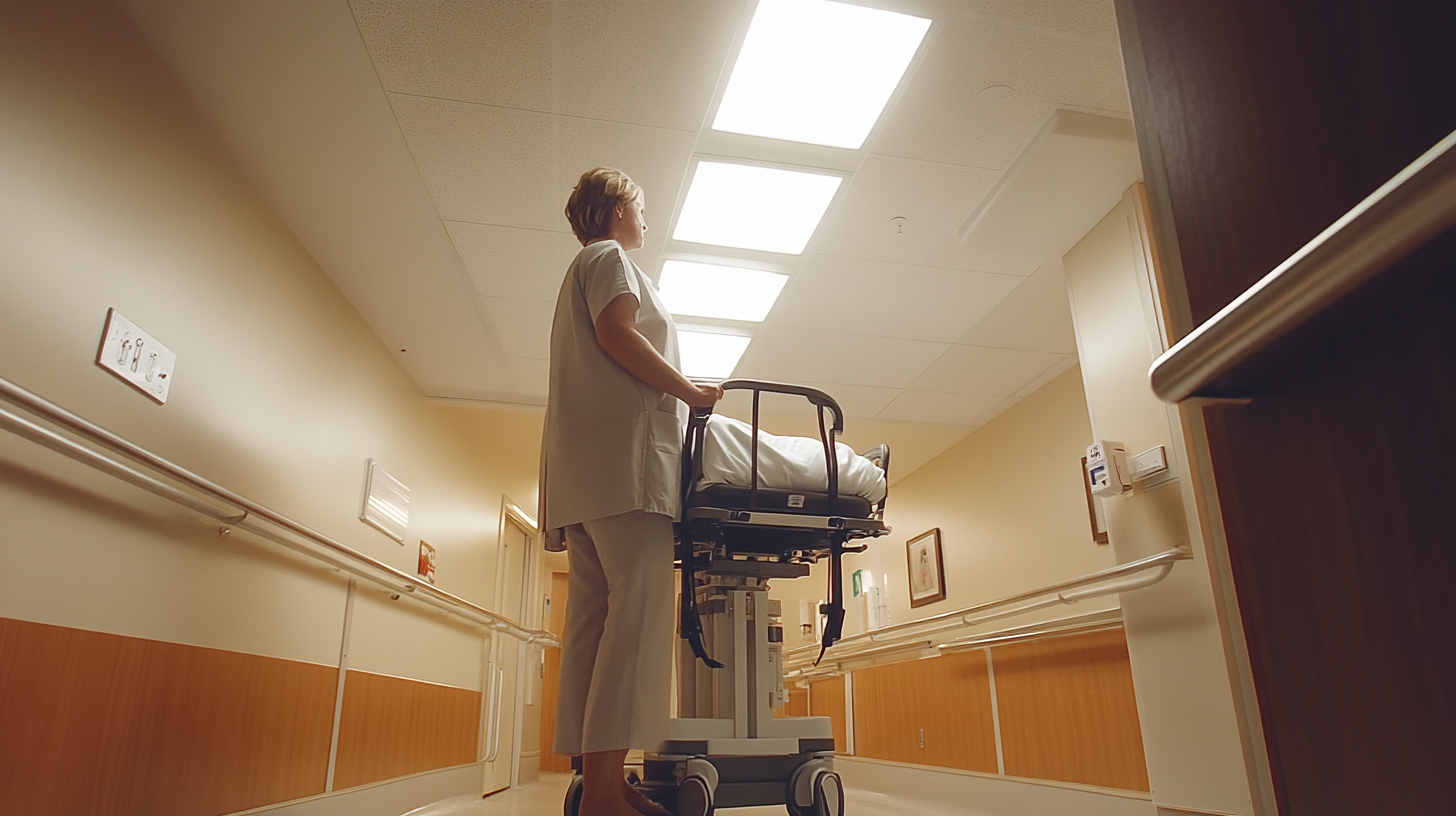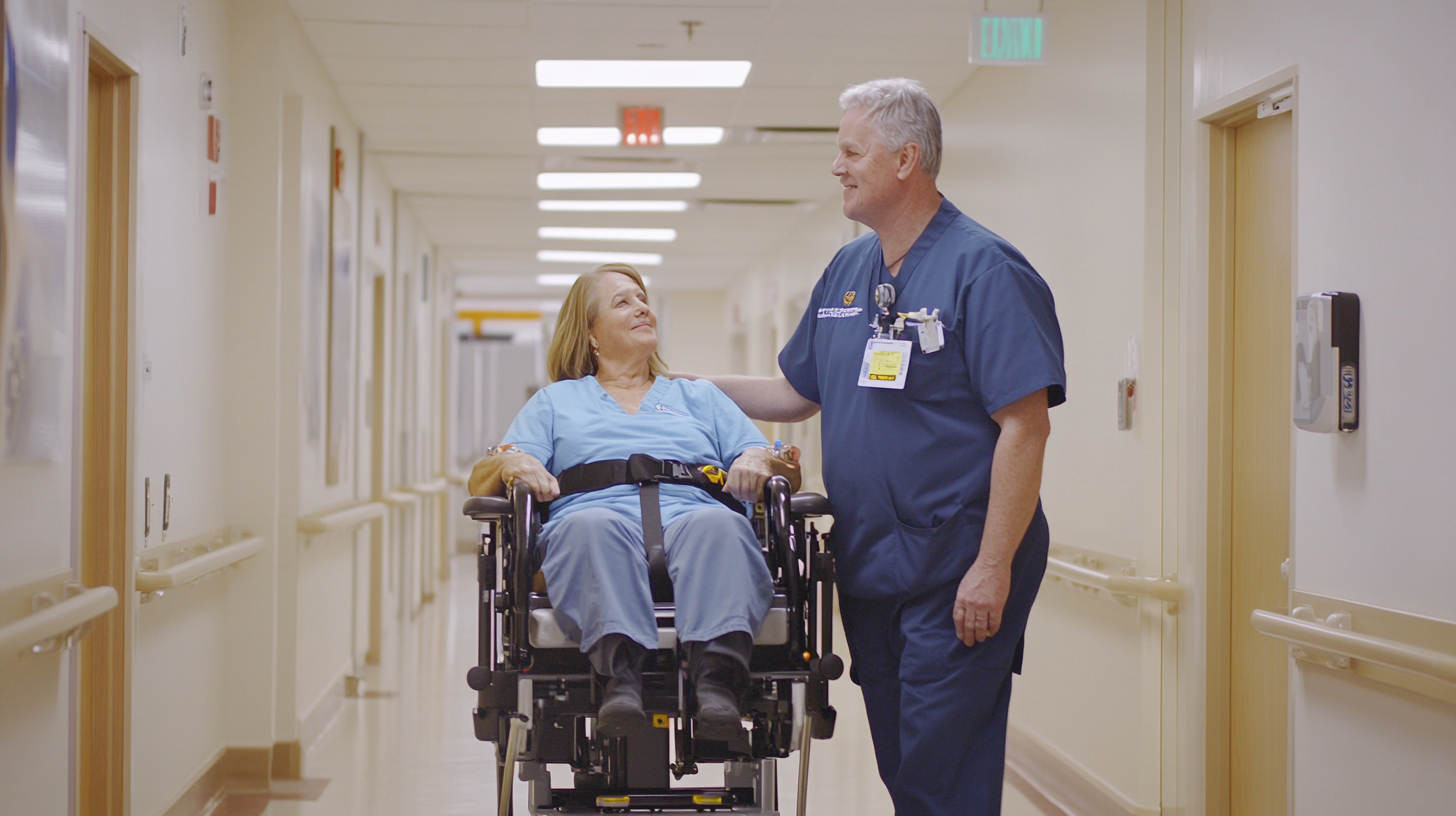Mastering the Art of Using Patient Lifts for Enhanced Caregiver Efficiency
In the evolving landscape of healthcare, the role of caregivers has never been more crucial, especially when it comes to the safe and efficient handling of patients. Utilizing the right tools can significantly enhance caregiver efficiency and patient safety. According to a report by the American Nurses Association, over 50% of nurses experience work-related injuries, many of which stem from the physical demands of patient handling. Implementing patient lifts is not just a matter of convenience; it is a necessity for reducing these injuries. Patient lifts reduce the physical strain on caregivers while ensuring the dignity and comfort of patients during transfers. As the healthcare industry continues to embrace innovation, mastering the use of patient lifts stands as a vital skill for caregivers seeking to optimize their workflow and minimize the risk of injury, paving the way for improved patient care and caregiver well-being.

The Importance of Patient Lifts in Reducing Caregiver Injury Rates
The use of patient lifts has become increasingly crucial in modern caregiving environments, as they play a pivotal role in reducing caregiver injury rates. Caregiving often involves physically demanding tasks, such as lifting, transferring, and repositioning patients, which can lead to musculoskeletal injuries if proper techniques are not applied. By integrating patient lifts into the daily routines of caregivers, the physical strain associated with these activities diminishes significantly, fostering a safer workplace.
Not only do patient lifts protect caregivers from potential injuries, but they also enhance the overall quality of care provided to patients. With the burden of lifting and transferring alleviated, caregivers can focus more on their patients' needs, ensuring comfort and dignity throughout the process. Furthermore, patient lifts are designed to accommodate various body types and mobility limitations, making them an essential tool for supporting safe and effective patient handling practices. As the healthcare sector continues to evolve, embracing innovative equipment like patient lifts is key to fostering both caregiver well-being and optimal patient care.

Understanding Different Types of Patient Lifts and Their Applications
When it comes to caregiving, the right equipment can make all the difference. Understanding the various types of patient lifts is crucial for enhancing caregiver efficiency and ensuring patient comfort. There are several types of patient lifts, including floor lifts, ceiling lifts, and stand-assist lifts. Each type serves a specific purpose, making it important to choose the right one for your patient's needs. Floor lifts are versatile and can be used in various settings, while ceiling lifts are ideal for spacious environments where lifting needs occur frequently.
**Tip:** Before selecting a patient lift, assess the space available and the mobility needs of the patient. This helps ensure that the lift will be effective and safe for both the patient and the caregiver.
Stand-assist lifts are particularly useful for patients who can bear some weight but need assistance during transfers. These lifts allow for greater independence while minimizing the risk of injury to the caregiver. Understanding the weight capacity and features of each lift can help caregivers select the most appropriate option.
**Tip:** Always review the manufacturer's guidelines and perform regular maintenance checks to ensure the lifting equipment remains in safe working condition. This proactive approach contributes to a safer lifting environment for all involved.
Mastering the Art of Using Patient Lifts for Enhanced Caregiver Efficiency
| Type of Patient Lift | Application | Weight Capacity | Best For |
|---|---|---|---|
| Hydraulic Lift | Transfer from bed to wheelchair | 350 lbs | Home care environments |
| Electric Lift | Assisted lifting and repositioning | 600 lbs | Hospitals and nursing homes |
| Stand-Up Lift | Assisting patients to a standing position | 300 lbs | Patients with partial mobility |
| Sling Lift | Full-body lifting | 450 lbs | For non-ambulatory patients |
| Portable Lift | Transfer in different locations | 400 lbs | Patients needing frequent transfers |
Statistical Impact: How Patient Lifts Increase Efficiency and Productivity
The integration of patient lifts in caregiving not only enhances patient mobility but also significantly boosts caregiver efficiency and productivity. Research indicates that happy workers demonstrate a 13% increase in productivity, underscoring the importance of creating a supportive work environment. By utilizing patient lifts, caregivers can reduce physical strain and the risk of injury, allowing them to focus more on patient care rather than the logistics of moving patients. This is crucial in high-demand healthcare settings where every minute counts.
Additionally, effective use of patient lifts streamlines workflows by facilitating quicker transfers and minimizing downtime. This advancement not only promotes the well-being of caregivers but also leads to better patient experiences. As workplaces evolve with technology and practices designed to enhance productivity, implementing tools like patient lifts becomes essential. Organizations that prioritize these innovations can expect not just improved efficiency, but also heightened satisfaction among their staff and the patients they serve.

Best Practices for Training Caregivers on Patient Lift Use
Training caregivers on the proper use of patient lifts is essential for enhancing patient safety and caregiver efficiency. Education programs should focus on foundational concepts of patient handling techniques, guiding caregivers to apply skills tailored to the needs of various patient populations. This approach helps ensure that caregivers understand the principles behind effective lifting and the importance of ergonomics, reducing the risk of injury to both the caregiver and the patient.
Implementing a tailored safety program can significantly improve the well-being of caregivers, particularly in high-demand environments like surgical teams. For instance, initiatives led by occupational therapists can provide caregivers with practical strategies to avoid work-related musculoskeletal disorders. Moreover, hands-on training in new facilities, such as St. Mary’s Healthcare System for Children’s simulation lab, offers caregivers immersive experiences that refine their skills and techniques in caring for medically fragile patients. By prioritizing effective training and education, healthcare organizations can foster a culture of safety and efficiency.
Evaluating Return on Investment: Cost-Benefit Analysis of Patient Lift Implementation
Implementing patient lifts in healthcare settings not only enhances the comfort and safety of patients but also significantly boosts caregiver efficiency. When evaluating the return on investment (ROI) of these devices, a thorough cost-benefit analysis is essential. This analysis should consider initial acquisition costs, ongoing maintenance, and training expenses, along with the tangible benefits such as reduced workplace injuries and improved patient handling efficiency.
Tip: When calculating ROI, include qualitative benefits such as increased caregiver satisfaction and improved patient outcomes, which can lead to long-term cost savings. For instance, fewer workplace injuries can translate to lower insurance premiums and reduced absenteeism among staff.
Moreover, consider the productivity gains achieved through streamlined patient transfers. Patient lifts can reduce the time caregivers spend on moving patients, enabling them to dedicate more time to direct patient care. This can enhance the overall quality of care, leading to higher patient satisfaction and potential revenue growth.
Tip: To maximize efficiency, ensure that all staff members are adequately trained in using patient lifts, including understanding the specific features and safety protocols. Implementing a regular training schedule can further enhance caregiver confidence, ensuring that the equipment is used to its full potential.
